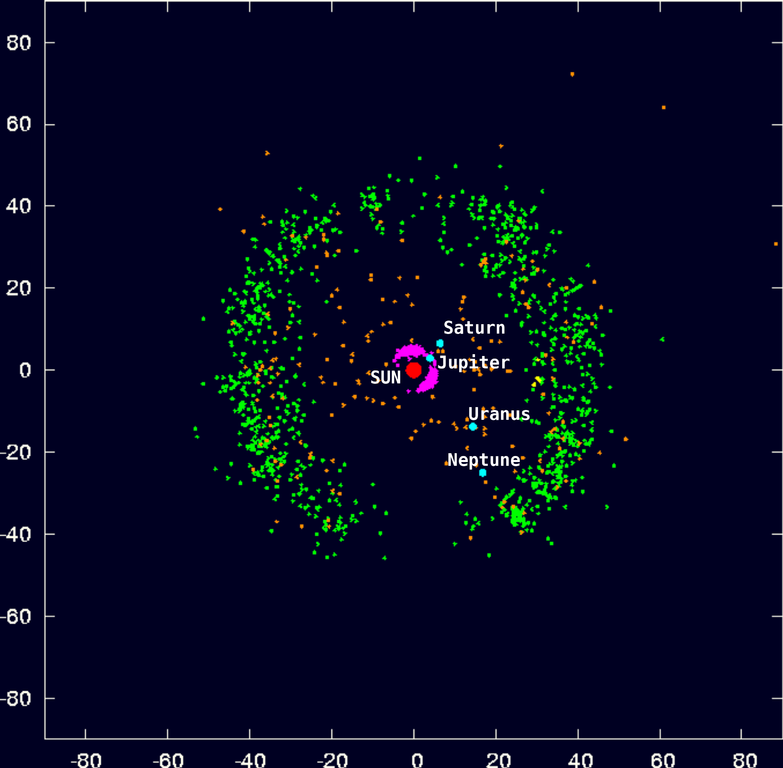 Two Rings for Asteroid Chariklo
Two Rings for Asteroid CharikloExplanation: Asteroids can have rings. In a surprising discovery announced two weeks ago, the distant asteroid 10199 Chariklo was found to have at least two orbiting rings. Chariklo's diameter of about 250 kilometers makes it the largest of the measured centaur asteroids, but now the smallest known object to have rings. The centaur-class minor planet orbits the Sun between Saturn and Uranus. The above video gives an artist's illustration of how the rings were discovered. As Chariklo passed in 2013 in front of a faint star, unexpected but symmetric dips in the brightness of the star revealed the rings. Planetary astronomers are now running computer simulations designed to investigate how Chariklo's unexpected ring system might have formed, how it survives, and given the asteroid's low mass and close passes of other small asteroids and the planet Uranus, how long it may last.
| << Previous APOD | This Day in APOD | Next APOD >> |


